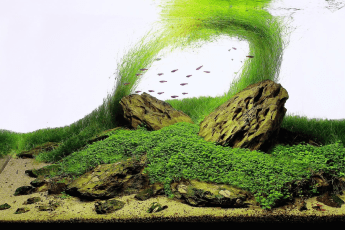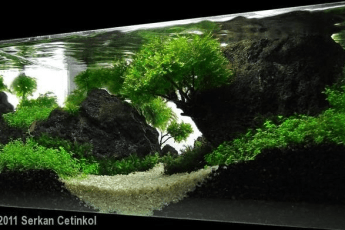Aquascaping, the art of designing and arranging aquatic elements within a fish tank, has gained immense popularity among aquarium enthusiasts. Creating a visually appealing underwater landscape involves a combination of creativity, technical skill, and an understanding of the natural world. To help aquascapers achieve breathtaking results, certain rules and principles have emerged over time. In this article, we will explore the essential rules of aquascaping that serve as a foundation for designing captivating aquatic environments.
The Golden Ratio:
The Golden Ratio, a mathematical concept often found in nature, plays a crucial role in achieving balanced and harmonious aquascapes. Designate key focal points in your aquarium using the Golden Ratio, creating a visually pleasing layout. This ratio (approximately 1:1.618) helps guide the placement of rocks, plants, and other elements to maintain a sense of proportion and aesthetic balance.
Similar to the Golden Ratio, the Rule of Thirds is a composition principle used in visual arts. Divide the aquarium into nine equal parts with two horizontal and two vertical lines, placing key elements at the intersections or along the lines. This technique adds interest and balance to the aquascape, preventing it from appearing too cluttered or imbalanced.
Foreground, Midground, and Background:
Dividing the aquarium into distinct zones – foreground, midground, and background – is crucial for creating depth and dimension. Utilize smaller plants or substrate variations in the foreground, medium-sized plants and decorations in the midground, and taller plants or eye-catching elements in the background. This layering technique mimics the natural progression of plants and enhances the overall visual appeal.
Negative space, or empty areas within the aquarium, is as important as the filled spaces. Allow for open spaces to create a sense of tranquility and draw attention to focal points. Avoid overcrowding the tank, as this can lead to a chaotic and unappealing appearance.
Carefully consider the color palette of your aquascape to achieve a harmonious and visually pleasing result. Select plants and decorations with complementary or analogous colors to create a cohesive and natural look. Experiment with different shades and tones to evoke specific moods within the aquarium.
Imitate the natural flow of water and create visual lines within the aquascape to guide the viewer’s eye. Sloping substrate, curved driftwood, or strategically placed rocks can help establish a sense of movement and direction, enhancing the overall aesthetics.
Maintenance and Growth Considerations:
A successful aquascape requires ongoing maintenance and consideration for plant growth. Regular pruning, water parameter monitoring, and adjustments to lighting and nutrient levels are essential to ensure the long-term health and vibrancy of the aquarium.
Conclusion:
Aquascaping is a dynamic and rewarding hobby that allows enthusiasts to create miniature underwater worlds. By adhering to these essential rules and principles, aquascapers can unlock their creativity, design stunning landscapes, and cultivate thriving aquatic environments. Whether you’re a beginner or an experienced hobbyist, understanding and applying these rules will undoubtedly contribute to the success of your aquascaping endeavors.




